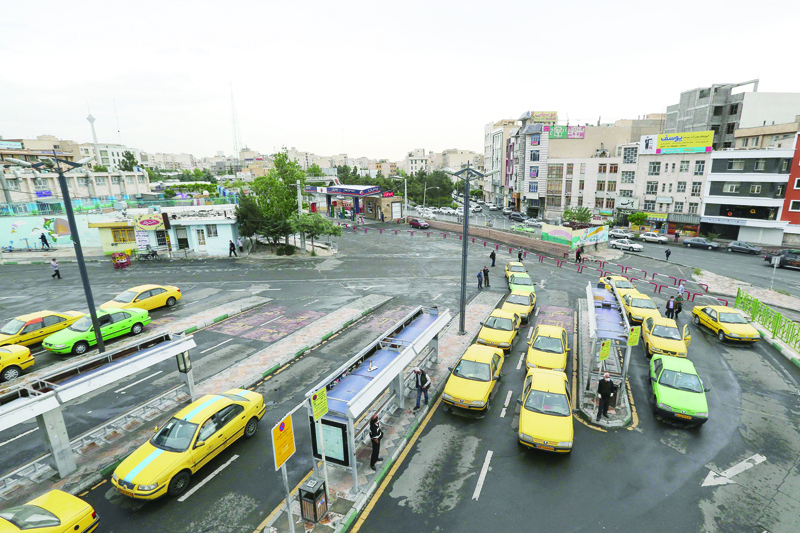
TEHRAN: Usually Tehran's tens of thousands of taxi drivers have to battle maddening traffic but now the coronavirus is driving them around the bend. Since it first emerged in Iran in mid-February, the virus that causes the COVID-19 disease has claimed 5,800 lives and infected more than 91,000, according to Iran's government. It has also put the brakes on most forms of transportation, and taxi services have been among the hardest hit in Tehran, a city of more than eight million people.
"So many taxis, but no passengers," lamented 52-year-old Mohammad, pointing to lines of yellow cabs hoping for a ride at Aryashahr station, a transport hub in west Tehran. The situation was "catastrophic" for the entire sector, he told AFP. "How can we pay the rent, the water and electricity bills, or even for the car?" his colleague Homayoun, 60, chipped in.
Mohammad is angry at the government and its insistence on respect for the rules of social distancing, which in his view discourage people from taking any form of public transport. In Aryashahr, most of the drivers have installed transparent partitions for the passenger compartments of their cars to isolate themselves from customers. In the hope of winning back clients, they also apply copious amounts of disinfectant on their vehicles.
One last spray
A driver named Rouhollah was lucky enough to get three customers, and with one last spray of disinfectant on his cab's door handles he was good to go. No less than 80,000 taxi drivers are authorized to work in Tehran, according to Alireza Qanadan, head of licensing for the municipality. Those suffering the most from the outbreak were the roughly 2,000 cabbies attached to the capital's two airports and bus terminals providing long-distance connections to other provinces, he said. "Their revenues have fallen by almost 90 percent" due to the coronavirus, Qanadan said.
In a bid to combat the spread of the virus, the authorities banned inter-city travel at the end of March. Since April 20, Iranians have once again been allowed to travel between provinces but this has not brought a return to normal for taxi services. On average, the daily earnings of all drivers in the capital are 64 percent lower than they were before the health crisis, Qanadan said.
Taxis operating in Tehran were suffering from the fact that now "many people use their own cars to get to work for fear of illness", he added. One commuter summed it up on Twitter. "I always used to take a taxi to work but now, with the coronavirus, I have to take my car and leave home an hour early to find a place to park," Hamid wrote. The municipality is also encouraging the use of private cars. In response to the coronavirus, it has lifted restrictions on traffic that had been imposed on central Tehran to combat the city's often heavy air pollution.
Ride-hailing hit too
For the drivers of taxis and ride-hailing services alike, the phased resumption of economic activity allowed in Tehran since April 18 has so far hardly improved their lot. "Before the coronavirus, I used to wait a maximum of 10 minutes to get a passenger, but these days I sometimes have to stand on a street corner for two hours," said Bahram, a driver for Tapsi, an Iranian version of Uber.
Since the Persian New Year holidays more than five weeks ago, the 37-year-old said he had only earned about 12 million rials ($76, 70 euros), less than a third of his usual takings. Another Tapsi-affiliated driver, Alireza, 49, spoke of a similar drop in income. He said he was getting by for the time being thanks to a loan from the company. In order to help drivers - 13 of whom have died from COVID-19, according to official figures-the municipality had extended their work permits free of charge, Qanadan said. For the most vulnerable of them, he added, city hall has also distributed sanitary articles and even food.- AFP










